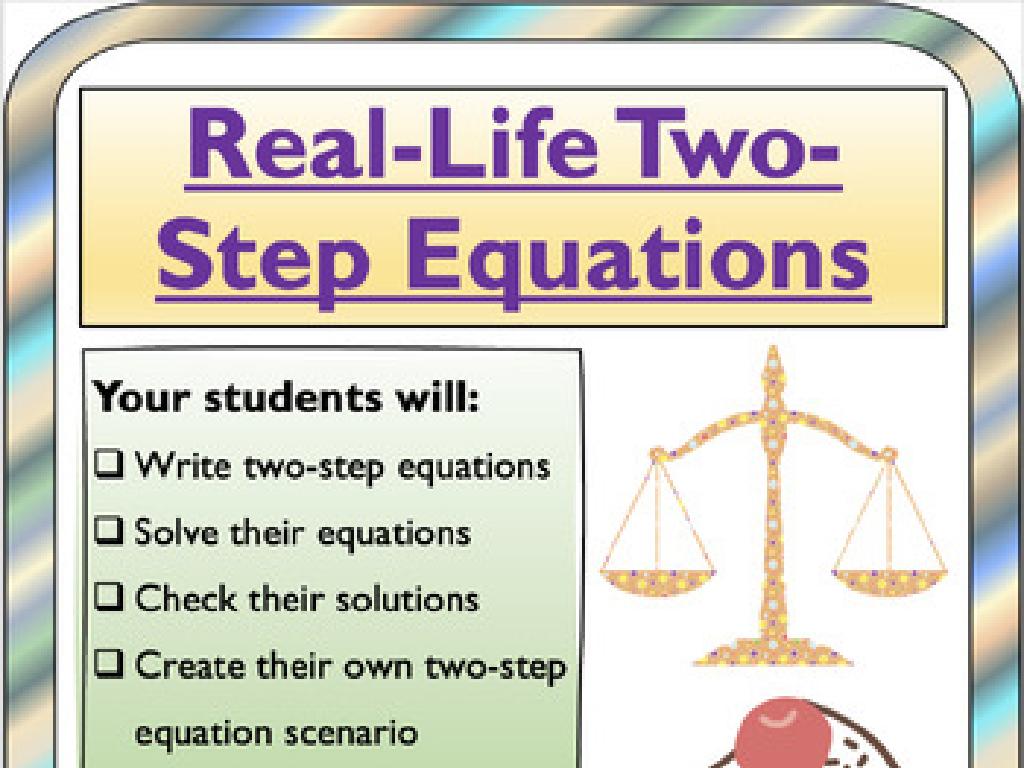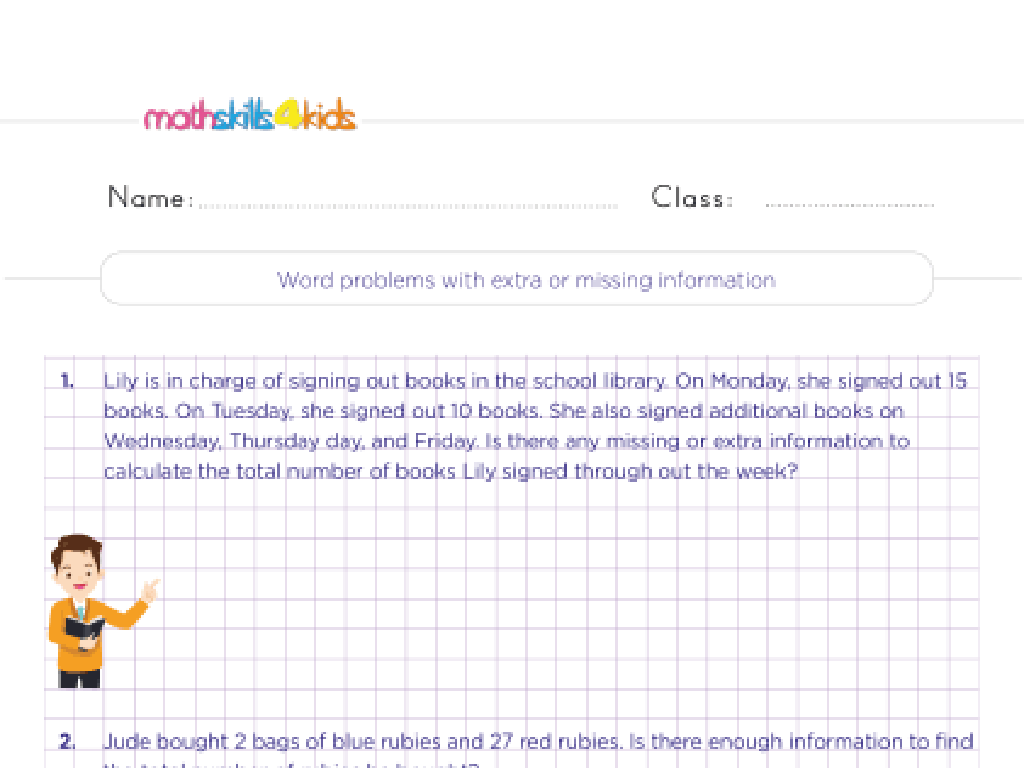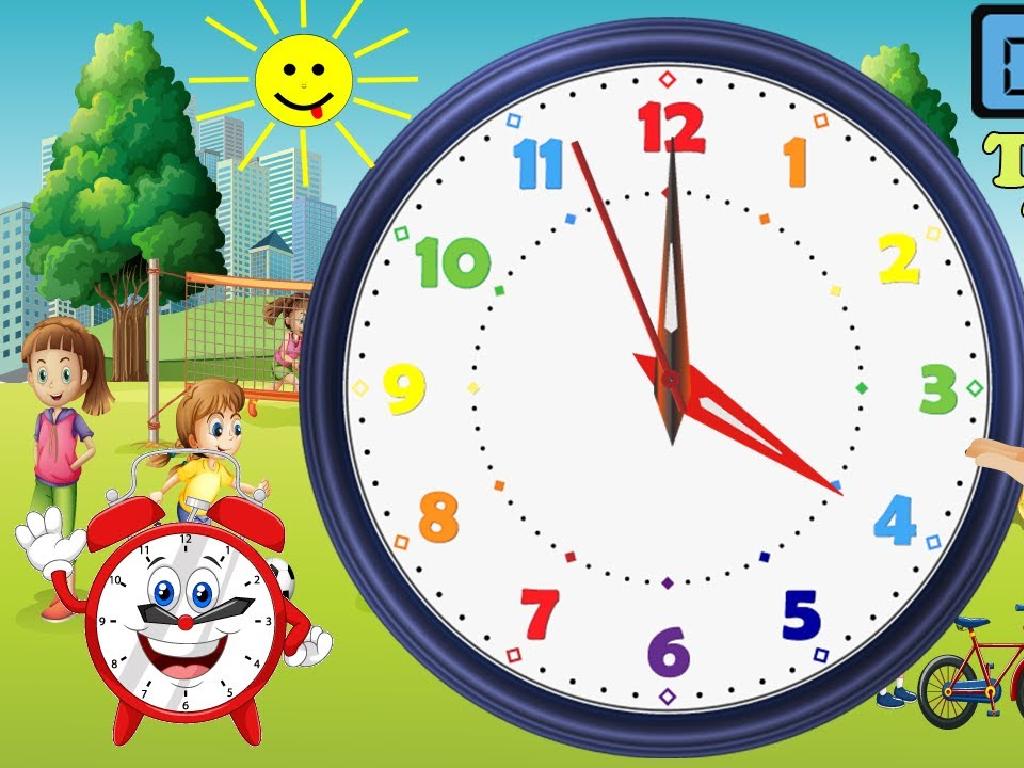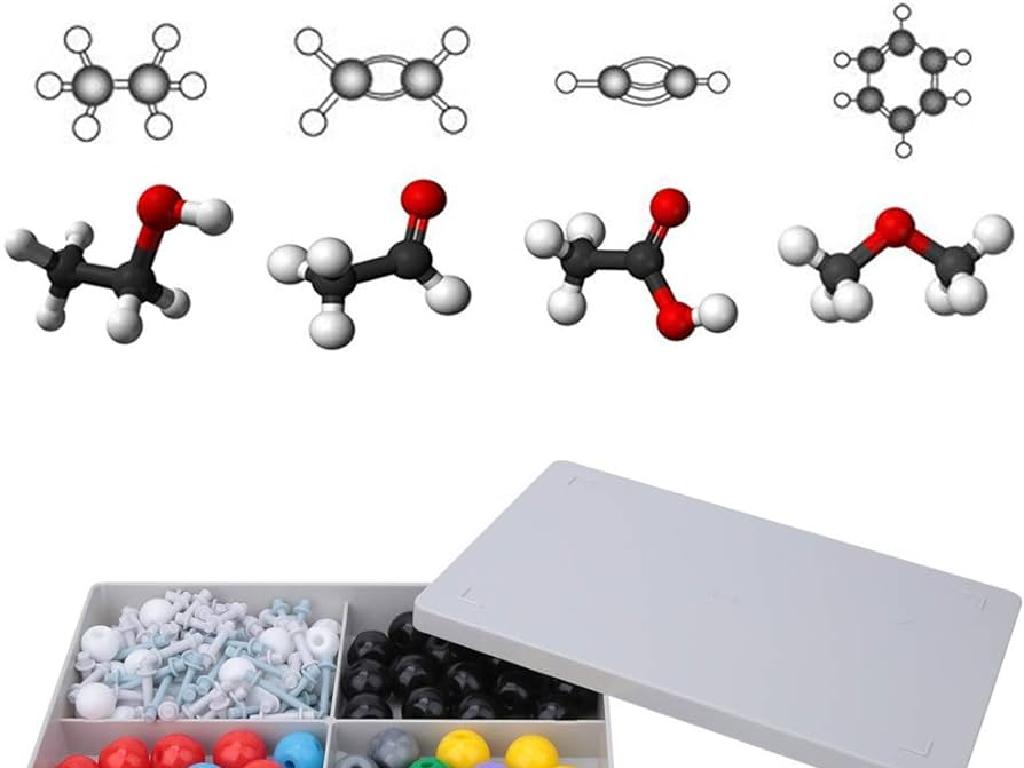Choose Between Subject And Object Personal Pronouns
Subject: Language arts
Grade: Third grade
Topic: Pronouns
Please LOG IN to download the presentation. Access is available to registered users only.
View More Content
Welcome to Pronouns!
– Greeting and today’s topic
– Pronouns: What are they?
– Words that take place of nouns, like ‘he’, ‘she’, or ‘it’
– Why use pronouns in sentences
– They make sentences shorter and avoid repetition
– Examples of pronouns
– ‘I’ is a subject pronoun, ‘me’ is an object pronoun
|
Begin the class with a warm welcome and introduce the topic of pronouns to the students. Explain that pronouns are words used to replace nouns, which are the names of people, places, or things, to avoid repeating them too often. This makes our sentences sound better and less repetitive. Discuss the importance of pronouns in making our communication clear and efficient. Provide examples of subject pronouns like ‘I’, ‘you’, ‘he’, ‘she’, ‘we’, ‘they’, and object pronouns like ‘me’, ‘you’, ‘him’, ‘her’, ‘us’, ‘them’. Encourage students to think of sentences where they can replace nouns with pronouns.
Understanding Subject Pronouns
– What are subject pronouns?
– Words that replace the subject in a sentence, like ‘I’, ‘you’, or ‘he’.
– List of subject pronouns
– ‘I’, ‘you’, ‘he’, ‘she’, ‘it’, ‘we’, ‘they’
– Role of subject pronouns in sentences
– They tell us who or what is doing the action.
– Examples using subject pronouns
– ‘She’ loves pizza. ‘They’ are playing soccer.
|
Begin by explaining that subject pronouns are used to replace the subject of a sentence, which can be a person, place, thing, or idea. This helps avoid repetition and makes sentences easier to read and understand. Provide the list of subject pronouns and ensure students can recite them. Then, illustrate their role in a sentence by showing how they can replace proper nouns or the subject’s name. Use clear and simple examples to show subject pronouns in action. Encourage students to create their own sentences using each subject pronoun to reinforce their understanding.
Understanding Object Pronouns
– What are object pronouns?
– Words that receive the action in a sentence
– List of object pronouns
– me, you, him, her, it, us, them
– Object pronouns in sentences
– ‘She gave me a gift.’ ‘The teacher called us.’
– Practice using object pronouns
|
This slide introduces object pronouns, which are pronouns that receive the action in a sentence. Start by defining object pronouns and explaining their function as the receiver of the action. Provide the list of object pronouns: me, you, him, her, it, us, and them. Give clear examples of sentences using these pronouns to illustrate their correct usage. For instance, in the sentence ‘She gave me a gift,’ ‘me’ is the object pronoun receiving the action of being given a gift. Encourage students to come up with their own sentences using object pronouns to reinforce their understanding. The practice will help solidify their grasp of the concept and prepare them for more advanced grammar lessons.
Choosing the Right Pronoun: Subject vs. Object
– Subject vs. object pronouns
– Subject pronouns are ‘I, you, he, she, it, we, they’; object pronouns are ‘me, you, him, her, it, us, them’.
– Fill in the blanks with pronouns
– ‘____ is going to the park.’ vs. ‘The ball was thrown to ____.’
– Interactive pronoun selection
– ‘____ (She/Her) loves chocolate.’ Choose the correct pronoun.
– Practice makes perfect
|
This slide is aimed at helping third-grade students understand the difference between subject and object pronouns. Begin by explaining that subject pronouns are used when the pronoun is the subject of the sentence (doing the action), while object pronouns are used when the pronoun is receiving the action. Provide examples with blanks for the students to fill in, such as ‘___ went to the store’ and ‘Mom hugged ___.’ For interactive questioning, ask students to choose the correct pronoun for given sentences, reinforcing the lesson through practice. Encourage students to explain their choices to foster a deeper understanding. The goal is for students to become comfortable with using pronouns correctly in both spoken and written language.
Let’s Practice Pronouns Together!
– Match sentences with correct pronouns
– Correct sentences as a group
– Discuss why each pronoun fits
– Why does ‘he’ work here, but not ‘her’?
– Reinforce pronoun usage
– Practice makes perfect! Use games to learn.
|
This interactive slide is for a class activity focused on subject and object personal pronouns. Start by engaging the students with a matching activity where they pair sentences to the appropriate pronouns. This could involve a worksheet or an interactive whiteboard activity. Once the matches are made, correct the sentences as a class, ensuring that each student understands why a particular pronoun is used in each context. Discuss the function of subject and object pronouns and how they fit into the sentence structure. Use examples like ‘He threw the ball’ vs. ‘The ball hit him’ to illustrate the difference between subject and object pronouns. The goal is to reinforce correct pronoun usage through practice and discussion. Provide additional examples and encourage students to explain their reasoning for choosing a particular pronoun, fostering a deeper understanding of the material.
Pronoun Game Time!
– Let’s play a pronoun game
– Work with a partner
– Pair up with a classmate for the game
– Find pronouns in a story
– Read a story together carefully
– Decide if they are subject or object
– Is it ‘he’ or ‘him’? ‘She’ or ‘her’? Think about their role in the sentence
|
This slide introduces an interactive game to help students practice identifying subject and object pronouns. The game will require students to work in pairs, fostering collaboration and discussion. Provide a short story or a paragraph to each pair and ask them to underline or highlight the pronouns they find. Then, they should determine whether each pronoun is a subject pronoun (like ‘he’, ‘she’, ‘they’) or an object pronoun (like ‘him’, ‘her’, ‘them’). This activity will help solidify their understanding of pronouns and their functions within sentences. As a teacher, walk around the classroom to assist pairs as needed and to ensure that each student is engaged and participating in the activity.
Class Activity: Pronoun Hunt
– Search for pronouns in a favorite book
– Share pronouns with the class
– Discuss subject vs. object pronouns
– Is the pronoun doing the action (subject) or receiving it (object)?
– Understand pronoun usage
– Helps in choosing the correct pronoun in sentences
|
This interactive class activity is designed to help students identify and differentiate between subject and object personal pronouns within the context of literature they are familiar with. Students will use their favorite books or stories to find examples of pronouns, fostering engagement through personal interest. As each student shares their findings, the class will discuss why a pronoun is used as a subject or an object, reinforcing the concept through practical examples. The teacher should guide the discussion, ensuring students understand that subject pronouns are the ‘doers’ of the action, while object pronouns receive the action in the sentence. Possible activities include pairing students to find pronouns together, creating a pronoun chart on the board, or having students write sentences using the pronouns they found.
Wrapping Up: Subject & Object Pronouns
– Review: Subject vs. Object Pronouns
– Subject pronouns are ‘I, you, he, she, it, we, they’. Object pronouns are ‘me, you, him, her, it, us, them’.
– Homework: 10 Sentences with Pronouns
– Use both types of pronouns in sentences. Example: ‘He gave it to me.’
– Share your questions
– Feel free to ask if you’re unsure about pronouns!
– Practice makes perfect!
|
As we conclude today’s lesson, recap the difference between subject and object pronouns. Subject pronouns are used when the pronoun is the subject of the sentence, while object pronouns are used when the pronoun is the object of a verb or preposition. For homework, students should write 10 sentences that include a mix of subject and object pronouns to reinforce their understanding. Encourage students to bring up any questions they have now or during the next class. This practice will help solidify their grasp of pronouns and how they are used in everyday language.






